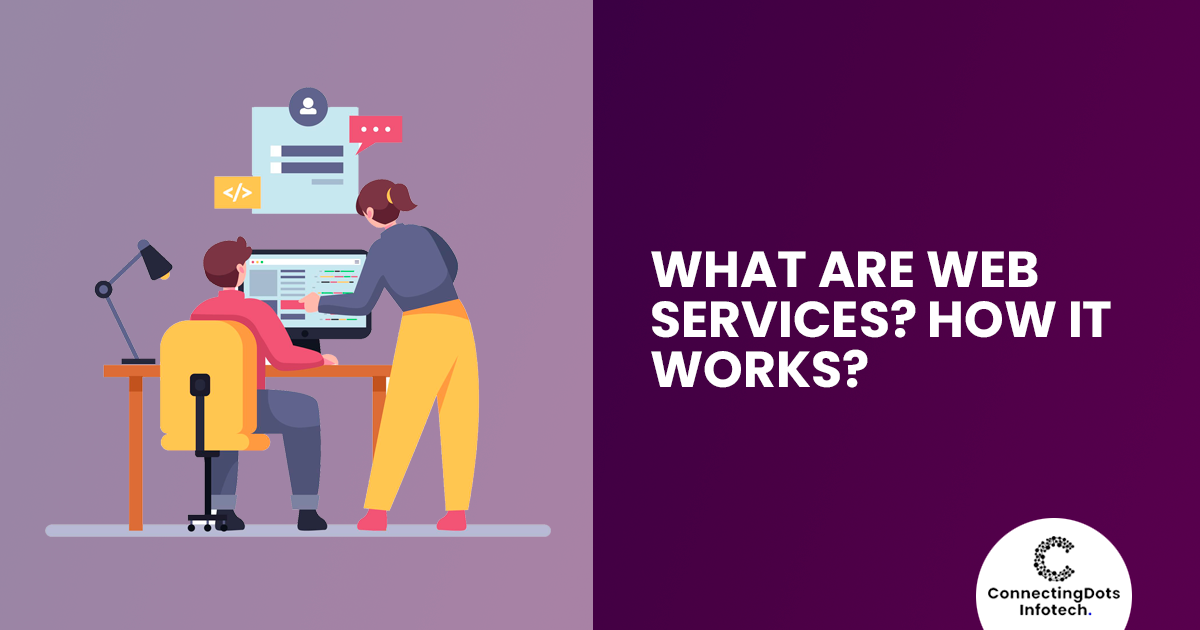What Are Web Services? How Does It Work?

These days, mentioning "web services" doesn't go far without conjuring up mentions of Google Cloud Platform or Amazon Web Services. But there's a reason behind it. By tackling the need for application development, these digital titans have raised the bar. Modern online services are made feasible by the scale of companies like Amazon and Google.
Web service testing and procedures are still complex creatures despite all of the technological advances. The tiniest variations might result in complex operations when attempting to migrate data between servers and the cloud since operating systems are required to handle apps, which can cause havoc with your ecosystem and application-integrated approach.
What Is Web Service?
A standardised method for facilitating communication between application clients and servers on the WWW is the web service (World Wide Web). A software module called a web service is made to carry out a certain set of activities.
How Do Web Services Work?
The graphic above presents a highly simplified interpretation of how a web service might actually operate. Through queries to a server hosting the actual web service, the client would start a sequence of web service calls.
The so-called remote procedure calls are used to submit these requests. Calls made to methods that are hosted by the appropriate web service are known as remote procedure calls (RPCs).
As an illustration, Amazon offers a website service that displays pricing for goods sold online through amazon.com. Java or.Net may both be used for the front end or presentation layer, and both are capable of communicating with the web service.
The data that is transmitted between the client and the server and is stored in XML is the essential element of a web service design. Similar to HTML, XML (Extensible Markup Language) is a simple, intermediate language that many programming languages can comprehend.
In order to communicate, programs really use XML. This gives applications created in different programming languages a common platform to communicate with one another.
The XML data is sent between apps via a protocol called SOAP (Simple Object Access Protocol), which is used by web services. Data is sent over standard HTTP. A SOAP message is a name for the data that is transmitted from the web service to the application.
Web Services Advantages
We already know that the original purpose of web services was to offer a platform that would enable various applications to communicate with one another.
Let's instead examine the advantages of using web services in order to understand why this is crucial.
A web service is a piece of managed code that gives client applications or end users access to a certain capability. Because this feature can be used with the HTTP protocol, it can also be used with the internet. Since all applications are now online, Web services serve a more beneficial role. As a result, the web service can be located anywhere on the internet and offer essential functionality.
Different apps can communicate with one another and exchange information and services via web services. Applications of every kind can communicate with one another. Consequently, you can now create generic code that is understandable by all apps rather than creating particular code that can only be understood by certain programs.
Web services employ SOAP over HTTP protocol, thus, you can implement them using your current, inexpensive internet.
Web Service Characteristics
The data representation and data transportation layers of Web Services employ XML. Since XML is a universally known language, using it removes any networking, operating system, or platform type of requirement.
Loose coupling describes how the client and web service are not connected, thus, even if the web service evolves over time, the client shouldn't alter how it contacts the web service. A loosely linked design tends to make software systems easier to maintain and facilitates easier system integration.
The term "synchronicity" describes how the client is tied to how the service is delivered. The client really waits for the web service to finish an action in synchronous operations. A situation where a database read-and-write operation is being carried out is possibly an illustration of this. The activities must be carried out in a consecutive order if data is read from one database and then transferred to another. A client can use asynchronous operations to start a service and then carry out additional tasks concurrently. This is one of the frequent and most popular methods for making sure that other services do not cease while a certain task is being performed.
Using an XML-based protocol, web services allow clients to call procedures, actions, and methods on distant objects. A web service must be able to accommodate the input and output parameters exposed by remote operations.
One of XML's main advantages is its universal method of encoding complicated texts as well as data. These records might be as straightforward as a current location or as sophisticated as a representation of an entire book.

Conclusion
Modern business apps generate electronic applications using a number of programming phases. Various apps could be developed using Java,.Net, Angular JS, Node.js, and other programming languages.
Web services are therefore relevant in this situation. Web services provide a common platform that enables communication between applications built on various programming languages. The growth of the Internet opened up the prospect of a web service. A web service aspires to transform the Internet from a just visual platform to a value-based tool.
